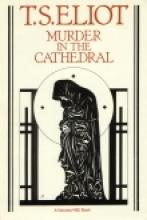No name
More Rare Catholic Stories and Poems
This second volume of stories is very similar to the first. Volume 2 is a larger book (7" x 8") and geared for slightly older children.
Mother to the Poor
Mozart, the Wonder Child
No need to introduce young Mozart or kids biographer extraordinaire Diane Stanley, but this brand new biography has a twist: she wrote the whole book as a marionette play! The pictures look as if his whole life is a show, with characters suspended on strings. Expect the usual detail-rich, high level writing that comes with her wonderful biographies.
Another innovative aspect is the medium she chose for the paintings for this book: the 500-year old method of egg-tempera. On the interior of the back jacket she explains about this medium and directs readers to the Society of Tempera Painters at www.eggtempera.com. For this art teacher, this definitely sparks my curiosity... potential projects abound in my head!
Much Ado About Nothing
During the credits, the men and women (who are in separate places) are shown bathing and dressing up while preparing to meet each other after the men had been away at war. While this is done in a fairly innocent manner, there are plenty of naked "backsides" in this scene.
There is a small scene during the costumed party involving a couple who are not behaving themselves very well. It does help establish their characters which play an essential role in the story. Although it is not terribly graphic (and might go unnoticed by small children), it is probably not suitable for younger viewers.
Directed by Kenneth Branagh, PG-13, 1 hr. 51 min., Color
Starring: Kennegth Branagh, Michael Keaton, Keanu Reeves, Emma Thompson and Denzel Washington
Much Ado About Nothing
Multiplication Songs
Murder in the Cathedral
Various editions available
Music Theory Learning Wrap-Ups: Introductory Kit
Kit includes four sets of 10 flashcards: Keys & Notes, Signs & Symbols, Rhythm & Vocabulary, Intervals & Chords
Our family has been enjoying Learning Wrap-Ups in a variety of subjects to drill and practice basic concepts. Each set consists of ten key-shaped plastic flash cards attached at a pivot-point with a string to wrap back and forth from question to answer. After finishing each key, simply look at the back to be sure the string matches up with the self-correcting answer key. I love how my children can study independently with these sets AND they can be used over and over again. They are sturdier and more self-contained than ordinary flash-cards (and don't get lost under the couches!). Learning Wrap-Ups may be purchased one set at a time or in money-saving multi-set kits.
This music theory kit includes four sets of Learning Wrap-Ups on Musical Theory for piano students:
Keys and Notes: Match notes on a staff to keyboard, letter notes to keyboard, notes with the same name on different staffs, fill in notes sequentially, etc. Includes some sharps and flats.
Signs and Symbols: Match musical terms (like mezzo forte and descrescendo) to their abbreviations, match musical symbols (like repeat, sharp and treble clef) with their meaning, find the relative minor for each major key, match the key with its signature in the treble clef, etc.
Rhythm and Vocabulary: Match notes to rests of equal value, match musical terms (like dolce and lento) to their English translations, match note groups of equal value, "How many counts per measure?", etc.
Intervals and Chords: Find the note to complete the chord, Match the chord with its name, Match triads to their black & white key patterns, etc.
Each set may also be purchased individually.
Made by Learning Wrap Ups.









